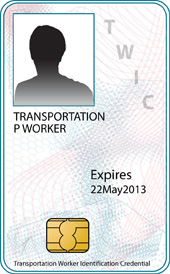Related Research Articles
Homeland security is an American national security term for "the national effort to ensure a homeland that is safe, secure, and resilient against terrorism and other hazards where American interests, aspirations, and ways of life can thrive" to the "national effort to prevent terrorist attacks within the United States, reduce the vulnerability of the U.S. to terrorism, and minimize the damage from attacks that do occur." According to an official work published by the Congressional Research Service in 2013, the "Homeland security" term's definition has varied over time.

The United States Department of Homeland Security (DHS) is the U.S. federal executive department responsible for public security, roughly comparable to the interior or home ministries of other countries. Its stated missions involve anti-terrorism, border security, immigration and customs, cyber security, and disaster prevention and management.

The Canada Border Services Agency is a federal law enforcement agency that is responsible for border control, immigration enforcement, and customs services in Canada.

The Container Security Initiative (CSI) a.k.a the 24-Hour Rule was launched in 2002 by the U.S. Bureau of Customs and Border Protection (CBP), an agency of the Department of Homeland Security. Its purpose was to increase security for container cargo shipped to the United States. As the CBP puts it, the intent is to "extend [the] zone of security outward so that American borders are the last line of defense, not the first."

United States Customs and Border Protection (CBP) is the largest federal law enforcement agency of the United States Department of Homeland Security, and is the country's primary border control organization. It is charged with regulating and facilitating international trade, collecting import duties, and enforcing U.S. regulations, including trade, customs, and immigration. CBP is one of the largest law enforcement agencies in the United States. It has a workforce of more than 45,600 sworn federal agents and officers. It is headquartered in Washington, D.C.

Backscatter X-ray is an advanced X-ray imaging technology. Traditional X-ray machines detect hard and soft materials by the variation in x-ray intensity transmitted through the target. In contrast, backscatter X-ray detects the radiation that reflects from the target. It has potential applications where less-destructive examination is required, and can operate even if only one side of the target is available for examination.

The National Cyber Security Division (NCSD) is a division of the Office of Cyber Security & Communications, within the United States Department of Homeland Security's Cybersecurity and Infrastructure Security Agency. Formed from the Critical Infrastructure Assurance Office, the National Infrastructure Protection Center, the Federal Computer Incident Response Center, and the National Communications System, NCSD opened on June 6, 2003. The NCSD mission is to collaborate with the private sector, government, military, and intelligence stakeholders to conduct risk assessments and mitigate vulnerabilities and threats to information technology assets and activities affecting the operation of the civilian government and private sector critical cyber infrastructures. NCSD also provides cyber threat and vulnerability analysis, early warning, and incident response assistance for public and private sector constituents. NCSD carries out the majority of DHS’ responsibilities under the Comprehensive National Cybersecurity Initiative. The FY 2011 budget request for NCSD is $378.744 million and includes 342 federal positions. The current director of the NCSD is John Streufert, former chief information security officer (CISO) for the United States Department of State, who assumed the position in January 2012.
Supply chain security activities aim to enhance the security of the supply chain or value chain, the transport and logistics systems for the world's cargo and to "facilitate legitimate trade". Their objective is to combine traditional practices of supply-chain management with the security requirements driven by threats such as terrorism, piracy, and theft.
The Customs-Trade Partnership Against Terrorism (C-TPAT) is a voluntary supply-chain security program led by U.S. Customs and Border Protection (CBP) focused on improving the security of private companies' supply chains with respect to terrorism. The program was launched in November 2001 with seven initial participants, all large U.S. companies. As of December 1, 2014, the program had 10,854 members. The 4,315 importers in the program account for approximately 54% of the value of all merchandise imported into the U.S.

The Transportation Worker Identification Credential program is a Transportation Security Administration and U.S. Coast Guard initiative in the United States. The TWIC program provides a tamper-resistant biometric credential to maritime workers requiring unescorted access to secure areas of port facilities, outer continental shelf facilities, certain manufacturing facilities, and vessels regulated under the Maritime Transportation Security Act of 2002, or MTSA, and all U.S. Coast Guard credentialed merchant mariners. As of May 2014, there were 2,999,058 people enrolled in the program. Those seeking unescorted access to secure areas aboard affected vessels, and all Coast Guard credentialed merchant mariners, must obtain a TWIC. The new measures were fully implemented on April 15, 2009. To obtain a TWIC, an individual must provide biographic and biometric information such as fingerprints, sit for a digital photograph and successfully pass a security threat assessment conducted by TSA.

Port security is part of a broader definition concerning maritime security. It refers to the defense, law and treaty enforcement, and counterterrorism activities that fall within the port and maritime domain. It includes the protection of the seaports themselves and the protection and inspection of the cargo moving through the ports. Security risks related to ports often focus on either the physical security of the port, or security risks within the maritime supply chain.

The Office of Field Operations (OFO) is a federal law enforcement agency within the U.S. Customs and Border Protection (CBP) responsible for managing United States customs operations at 20 Field Operations offices, 328 ports of entry, and 16 pre-clearance stations in Canada, Ireland, the UAE, and the Caribbean. Headed by an Executive Assistant Commissioner, OFO directs the activities of more than 27,000 employees, including more than 22,000 CBP Officers and Agriculture Specialists. CBP Office of Field Operations is the largest component in CBP. It is headed by Executive Assistant Commissioner William A. Ferrara.

The Border and Maritime Security Division (BMD) is a division of the Science and Technology Directorate of the United States Department of Homeland Security. Within the Homeland Security Advanced Research Projects Agency, BMD develops tools and technologies that improve the security of the United States's land borders and waterways.

Cargo scanning or non-intrusive inspection (NII) refers to non-destructive methods of inspecting and identifying goods in transportation systems. It is often used for scanning of intermodal freight shipping containers. In the US it is spearheaded by the Department of Homeland Security and its Container Security Initiative (CSI) trying to achieve one hundred percent cargo scanning by 2012 as required by the US Congress and recommended by the 9/11 Commission. In the US the main purpose of scanning is to detect special nuclear materials (SNMs), with the added bonus of detecting other types of suspicious cargo. In other countries the emphasis is on manifest verification, tariff collection and the identification of contraband. In February 2009, approximately 80% of US incoming containers were scanned. To bring that number to 100% researchers are evaluating numerous technologies, described in the following sections.
APM Terminals is a port operating company headquartered in The Hague, Netherlands. A unit of Danish shipping company Maersk's Transport and Logistics division, it manages terminals and provides integrated cargo and inland services. It operates 74 port and terminal facilities in 40 countries on five continents, with five new port projects in development, in addition to over 100 inland services operations providing container transportation, management, maintenance and repair in 38 countries, for an overall global presence of 58 countries. In 2018, APM Terminals was ranked the world's fifth largest container terminal operator.
The concept of border security in the United States shares a complex relationship with the persistent threat of terrorism. Border security includes the protection of land borders, ports, and airports. The relationship is unique in the sense that the federal government must constantly reevaluate and tweak its border security policy to address the perceived threats posed to the United States through the form of human terrorism or the smuggling and detonation of a weapon of mass destruction.

The Global Trade Exchange (GTX) is, or was, a controversial Homeland Security intelligence project, related to maritime-ports data-mining, being one of three pillars of the Safe Ports Act-related Secure Freight Initiatives. The Global Trade Exchange has a mysterious history dating from conception in 2004, a 2007-2008 year of hype, and sudden placement on "hold" status. Described as a ready-to-buy, commercially available database, the GTX was rush-funded by Congress as part of and championed relentlessly by then-United States Secretary of Homeland Security Michael Chertoff in evident disregard of objections of confused and frustrated U.S. private sector trade groups. After a year-long spate of official support, media hype, and after award of Congressional funding of $13 million, the GTX was put "on hold for further study by the [U.S.] Navy" in April 2008, for reasons still yet to-be explained. Touted by senior U.S. officials and Congress in 2007 as an anti-terrorism database for tracking long-haul shipping containers, the Global Trade Exchange's principal focus appears to have a different focus, notably advance trade-finance information for market-making purposes.
The Importer Security Filing (ISF) also referred to as 10+2, is a customs import requirement of the United States Customs and Border Protection (CBP) ; which requires containerized cargo information, for security purposes, to be transmitted to the agency at least 24 hours (19 CFR section 149.2 before goods are loaded onto an ocean vessel headed to the U.S. for shipment into the U.S. 10+2 is pursuant to section 203 of the SAFE Port Act, and requires importers to provide 10 data elements to CBP, as well as 2 more data documents from the carrier.

The Essential Transportation Worker Identification Credential Assessment Act is a bill that would direct the United States Department of Homeland Security to assess the effectiveness of the Transportation Worker Identification Credential (TWIC) program. The bill would require an independent assessment of how well the TWIC program improves security and reduces risks at the facilities and vessels it is responsible for. The evaluation would include a cost-benefit analysis and information on alternate technologies that could be used.
Container port design process is a set of correlated practices considered during container port design, aiming to transfer general business mission into detailed design documents for future construction and operation.
References
- ↑ http://london.usembassy.gov/press_releases/12oct07-secure_freight/CBP_Fact_Sheet--SFI--Secure_Freight_Initiative__at_a-glance.pdf%5B%5D
- ↑ "Archived copy". Archived from the original on 2011-07-22. Retrieved 2016-07-29.
{{cite web}}: CS1 maint: archived copy as title (link) - ↑ "Archived copy" (PDF). www.apl.com. Archived from the original (PDF) on 17 May 2008. Retrieved 30 June 2022.
{{cite web}}: CS1 maint: archived copy as title (link)